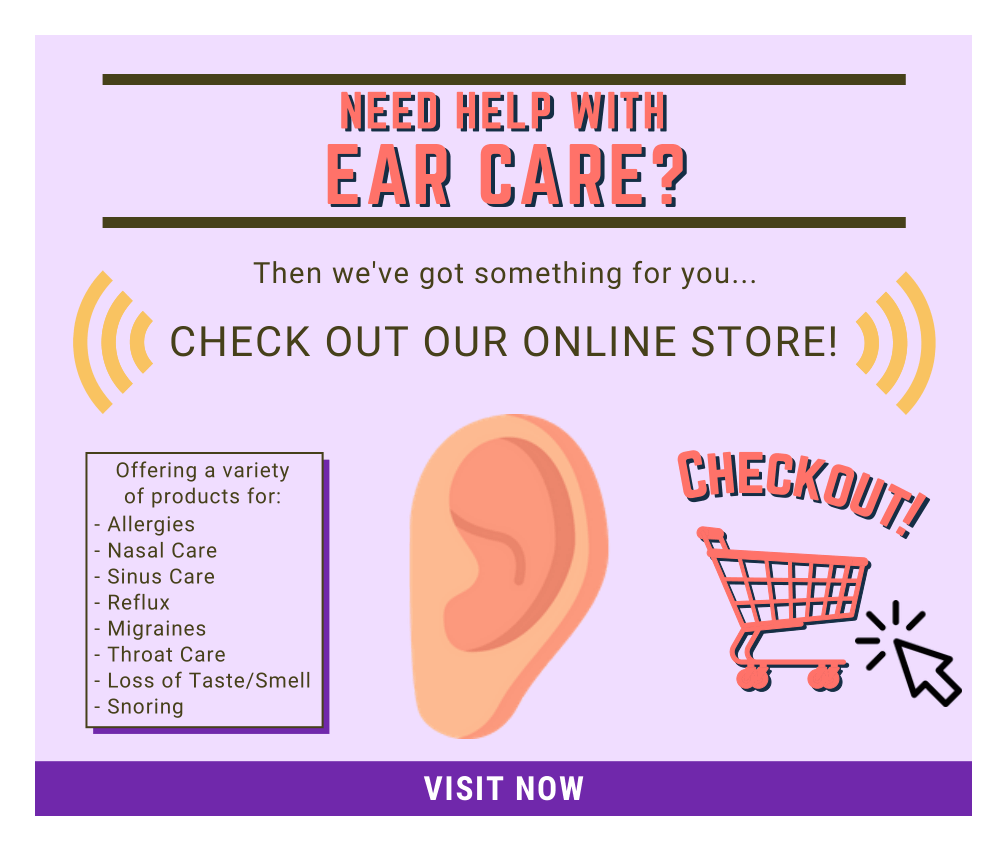Fungal Ear Infections
by Dr. Christopher Chang, last modified on
4/13/21.

Unlike bacterial ear infectons which are very common, fungal ear infections occur less frequently accounting for less than 10% of all ear infections. Fungal ear infections, also called otomycosis, almost always involve only the ear canal and typically cause an exuberant growth of fungal debris consistent with cottage cheese filling the ear canal as shown in the picture to the right. Less commonly, the fungal debris may appear more "hairy" as shown in the picture below.
Symptoms of fungal ear infections include:
• Minimal (if any) pain
• Significant itchiness
•
Hearing loss due to blockage from the debris filling the ear canal
There are three main scenarios in which fungal ear infections occur.
The first and most common cause of fungal ear infections is in a setting where antibiotics were recently used, typically antibiotic ear drops to treat an initial bacterial outer ear infection or swimmer's ear. The analagous situation is oral thrush after taking an oral antibiotic.
The second situation is during regular use of ear plugs or hearing aids which prevent the ear canal from having adequate air ventilation. The ear canal environment than becomes more humid than ideal. And mold loves a dark and humid environment.
The final and least common situation where fungal ear infections may occur is in the immunocompromised patient (ie, HIV, cancer treatment, severe diabetes, organ transplant recipient, etc). The fungal ear infection would be considered an opportunistic infection in such patients.
Treatment

Regardless of the situation, all fungal ear infections are basically treated the same way.
Although there are several ways that fungal ear infections can be treated, the most common and highly successful way to eliminate these infections is by thoroughly removing as much of the fungal debris as possible under the microscope. The ear canal is than immediately and completely filled with an antifungal cream (lotrisone which also contains a steroid to help with the itching is my favorite). It is imperative that the cream completely fill the ear canal from the eardrum all the way to the ear canal opening. In order to precisely administer the antifungal cream deep in the ear canal, I typically use a 10cc syringe which is attached to a 18 gauge angiocath. The ear is than left alone and kept dry for one week. At this point, the vast majority of the times, the fungal ear infection should be either completely resolved, or nearly so, in which case one more treatment should be sufficient.
For milder cases of fungal ear infections, lotrimin drops (1% clotrimazole solution) can be administered into the ear canal (yes... the same drops used for Athlete's Foot). I typically suggest 4 drops twice a day for 1 week. Make sure no hole in the eardrum is present in which case, the cream option discussed above is the better option.

If a patient suffers from recurrent fungal ear infections, half strength acetic acid drops can be administered into the ear canal regularly as a preventative measure. Half-strength acetic acid drops can be made at home by mixing half and half water with white vinegar used in cooking. This concoction also helps prevent swimmer's ear infections. Beware! Do NOT use these drops if a hole is present in the eardrum!!!
Should acetate drops not work or is contraindicated due to a hole in the eardrum, fungizone powder can be gently puffed into the ear canal regularly using a bulb insufflator.
If hearing aids or ear plugs are regularly used, make sure to remove them whenever they are not being actively used to allow the ear canal to ventilate and have a chance to dry out. Also, make sure you clean the outer shell thoroughly and regularly with rubbing alcohol or use either a drying jar or sanitizer box.
Related Blog Articles
- Yoga Pose to Treat Ear Pain or Pressure
- Pacifier Use Increases Risk of Ear Infections in Infants
- Types of Ear Tubes
- Why Does the Ear Hurt with Cold Air or Cold Wind Exposure?
- Can Ear Plugs Cause a 700 fold Increase in Germs in the Ear Canal? (Headphones, Hearing Aids, Stethoscopes, etc)
- To Ear Plug or Not to Ear Plug
- Recurrent Infections of the Ear, Sinus May be Due to Immunodeficiency
- How Much Better are Antibiotic Ear Drops Compared to Oral Antibiotics?
- Swimming Pools, Poop, and Ear Infections
- How to Dry the Ears if Water Gets In
- Are OTC Otoscopes Any Good? (Dr. Mom Pocket Otoscope, etc)
- Does Removing the Adenoids Decrease Risk of Ear Infections? Yes...
- Some Facts About Q-Tips and Ears
- When Your Child Has a Draining Ear
- Can Eye Drop Medications be Used in the Ear?
- Kissing the Ear Can Cause Permanent Hearing Loss
- Human Ear Contains a Built-In "Ear Plug"
- Flying and Ear Problems
- Cell phone Use May Cause Ear Pain/Dermatitis
Related Articles Readers Have Viewed
Any information provided on this website should not be considered medical advice or a substitute for a consultation with a physician. If you have a medical problem, contact your local physician for diagnosis and treatment. Advertisements present are clearly labelled and in no way support the website or influence the contents. Please note that as an Amazon Associate, we may earn small commissions from qualifying purchases from Amazon.com. Click to learn more.










